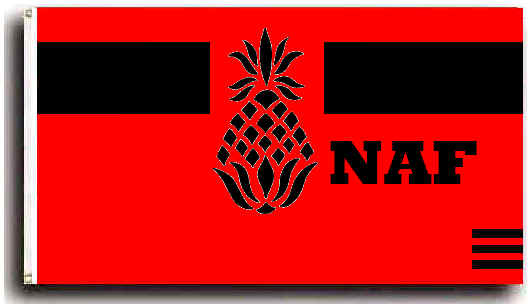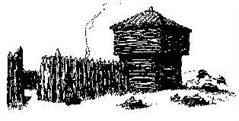|
.....
|
|

BUCK
CONNER
Editor
- Staff
Writer |
Smoke Signals
Jul./Aug. '10
|
We get some real unusual questions from
you folks from time to time. I told Bill I was going to address these as we have
space and time to research them. Here's an old one asked back in 2007.
___________________________
CARCASS Utilization
MEAT
Beaver, muskrat and raccoon can be used
for human consumption. The meat from these animals is very
good if prepared properly. Animals that are freshly caught, skinned and gutted
will taste the best. The
front and hind quarters and back meat are most commonly utilized, while the rib
cage area is usually
discarded. All meat should be soaked in salt water overnight before preparing.
All fat should be carefully
removed from raccoon and parboiling further helps to eliminate fat and the taste
it imparts to the meat.
All oil should be skimmed or poured off after
boiling.
Beaver and muskrat carcasses can be sold
to fur farms as animal feed or to sled dog trainers. Carcasses
should be gutted and frozen while being stored. Most dogs will eat beaver and
muskrat carcasses. These
can be used as excellent supplements to or
substitutes for dog food.
The meat from many fur bearers can all be
used as trapping bait. Muskrat is excellent bait for mink.
Pieces of beaver or muskrat, either fresh or tainted, work well for canines and
cats, especially in winter,
as is bobcat or lynx.
High school biology teachers in your area
might want carcasses or skulls for use as teaching aids in
anatomy or taxonomy classes. The trapper
should attempt to utilize the full value of every fur bearer.
GLANDS
Many trappers are unaware of the value of
the glands of animals that they trap. Some glands have
commercial value and others are valuable to the trapper for formulating his own
lures. On beaver, castor
glands and oil sacs, both found in the anal area, are of value and can be
removed by carefully pulling
and cutting the flesh away from the glands. The oil sacs are light in color and
contain a yellowish, oily
fluid. The castor glands are darker with a veined appearance. Care should be
taken to keep the pair of
castor glands joined together. Castors are normally dried before selling, but
can be frozen. To dry, hang
them over a rope or wire. Dry them for one day, essence). room temperature, then
freeze until sale.
Beaver castor is used extensively in the
perfume industry as well as by lure manufacturers.
Members of the weasel family (mink,
weasel, skunk, otter, fisher) have anal glands which contain a
powerful musk useful in lure making. These glands open in the anal area and are
pod-shaped, containing
liquid musk. They can be cut loose carefully with a minimum of squeezing and
should be kept cool or
frozen until used. The glands of weasels are particularly valuable as an
attractant for mink, otter, weasel
or canids. The anal glands and foot pads of canines are often used in lure
making for those species. The
glands of raccoons, opossums, badgers, and
muskrats are less commonly collected for lure making.
Caution: Glands should be doubly or triply
sealed before placing in the family freezer, and even then
you do so at your own risk! Skunk glands can be removed by the method described
above, but it is
easier (and safer) to withdraw the musk with a syringe and inject it into a jar
that can be tightly sealed
and stored in a cool place (there is no need to freeze pure skunk.
-
Information is a reprint used with permission
from the Colorado Outdoors Magazine Summer 1989.
________________________________________
QUESTION
Does anyone know what
would need to
be done to a beaver so I could properly freeze
it , if anyone can help with this,
I'd appreciate it, things along the line of how to gut them,
whether to
quarter it, etc.... Leonard Bates, Colo. Spgs, CO.
ANSWER
First, skin the
critter.
Next, using just the tip of your knife, slit up
the centerline of the abdominal wall from
vent to breastbone, cutting to one side of the penis if
a male. Cut away the
diaphragm (the muscle between the abdomen and chest). Reach
into the chest as in into the neck as possible
and cut away the trachea and esohagus
(throat). Pull on these two structures to remove the lungs,
and heart. Stop when
these structures are pulled just below the sternum (breastbone).
Take a bit of string to tie off the urethra as
near the genitalia as you can. Use
another bit of string to tie off the large bowel as near the
anus as possible. Use a
knife to severe these structures as near the surface as
you can. The string is used to help prevent
contaminating your meat with urine
or feces.
Once the bowel and
urethra are severed, removed everything that's inside
the carcass. Clean up any
blood or other gunk spilled onto the meat by rinsing it
in cold water, but don't let the meat soak in water as that will
only drive blood and stuff in deeper.
Remove
the front legs by slicing the shoulder blade away with your
knife.
Remove the rear legs by
slicing the muscle between the thigh and spine
until you can see the
ball joint of the femurs (large thigh bones). Cut away any
ligaments you see, and twist and pry until the
femur pops out of the joint. You'll
then have the entire rear leg in your hand.
Cut the back away from
the ribcage by cutting through the meat just behind
the last (floating) ribs on both sides, all the
way to the spine. Break the spine
over your knee (like a stick of wood) and cut the two pieces
away with your
knife.
If you wish, you can
use a knife to split the sternum. By breaking the
ribs near the spine you
can then make the breast lie more or less flat. I
prefer to wrap each piece separately in film, then again in
butcher
paper.
Use a permanent marker to mark the species and
date, and place it in your freezer. I use
a chest-type freezer for game, and first place it as near
the coils of the freezer as possible to freeze
it deeply. Once it's frozen through
I can move it to the other end of the freezer for storage.
If you wish to ship it,
contact a local meat packing house. They should
be able to provide heavy
cardboard containers or perhaps even styrofoam shipping
boxes. Dry ice can be purchased from an ice-cream wholesaler,
some meat packing plants,
or a fire-extinguisher repair/servicing company (Carbon dioxide
is also used in some extinguishers). To ship 1 beaver frozen,
you'll need about 1 lb. of dry ice. Be sure the
dry ice is wrapped in several sheets of
newspaper or similar so it doesn't rest directly against a
package
of meat.
Be sure the recipient
knows to expect the package so s/he can remove the
meat
and place it back in a freezer as soon as possible.
YMH&OS
"Swanny"
Thomas Swann, Alaska State Muzzle Loading Association.
___________________________
We will
continue to answer questions that we think will interest our members here and
the other ones will be answer by email.
Later
Buck Conner
 
___________________________
|